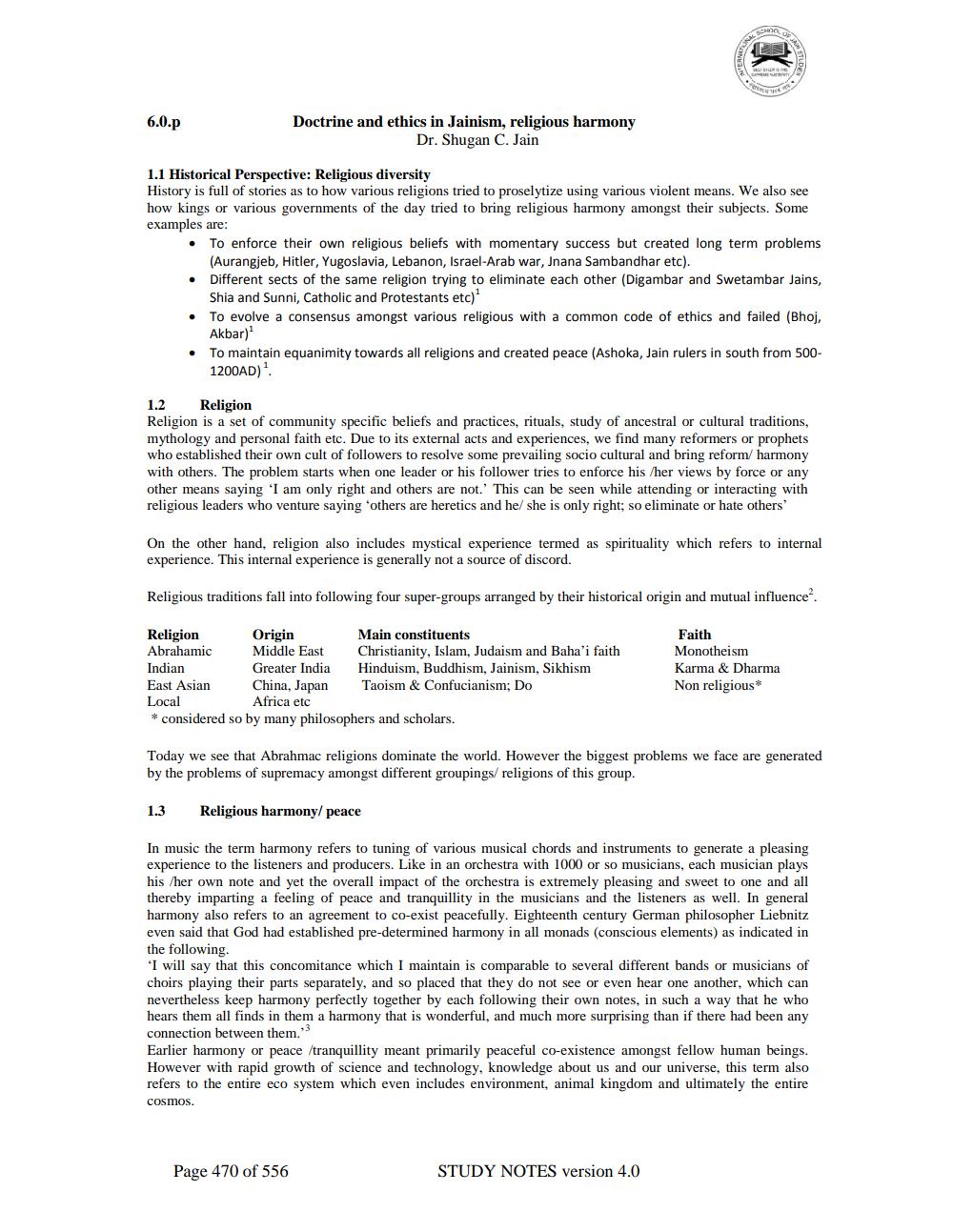________________
6.0.p
1.1 Historical Perspective: Religious diversity
History is full of stories as to how various religions tried to proselytize using various violent means. We also see how kings or various governments of the day tried to bring religious harmony amongst their subjects. Some examples are:
Doctrine and ethics in Jainism, religious harmony Dr. Shugan C. Jain
• To enforce their own religious beliefs with momentary success but created long term problems (Aurangjeb, Hitler, Yugoslavia, Lebanon, Israel-Arab war, Jnana Sambandhar etc).
• Different sects of the same religion trying to eliminate each other (Digambar and Swetambar Jains, Shia and Sunni, Catholic and Protestants etc)1
• To evolve a consensus amongst various religious with a common code of ethics and failed (Bhoj, Akbar)1
• To maintain equanimity towards all religions and created peace (Ashoka, Jain rulers in south from 5001200AD)1.
1.2
Religion
Religion is a set of community specific beliefs and practices, rituals, study of ancestral or cultural traditions, mythology and personal faith etc. Due to its external acts and experiences, we find many reformers or prophets who established their own cult of followers to resolve some prevailing socio cultural and bring reform/ harmony with others. The problem starts when one leader or his follower tries to enforce his/her views by force or any other means saying 'I am only right and others are not.' This can be seen while attending or interacting with religious leaders who venture saying 'others are heretics and he/she is only right; so eliminate or hate others'
Religion
Abrahamic
On the other hand, religion also includes mystical experience termed as spirituality which refers to internal experience. This internal experience is generally not a source of discord.
Religious traditions fall into following four super-groups arranged by their historical origin and mutual influence2.
Indian
East Asian
Local
1.3
VERSAC
Origin Middle East Greater India
China, Japan Africa etc
* considered so by many philosophers and scholars.
Main constituents
Christianity, Islam, Judaism and Baha'i faith Hinduism, Buddhism, Jainism, Sikhism Taoism & Confucianism; Do
Page 470 of 556
Today we see that Abrahmac religions dominate the world. However the biggest problems we face are generated by the problems of supremacy amongst different groupings/ religions of this group.
Religious harmony/ peace
In music the term harmony refers to tuning of various musical chords and instruments to generate a pleasing experience to the listeners and producers. Like in an orchestra with 1000 or so musicians, each musician plays his/her own note and yet the overall impact of the orchestra is extremely pleasing and sweet to one and all thereby imparting a feeling of peace and tranquillity in the musicians and the listeners as well. In general harmony also refers to an agreement to co-exist peacefully. Eighteenth century German philosopher Liebnitz even said that God had established pre-determined harmony in all monads (conscious elements) as indicated in the following.
'I will say that this concomitance which I maintain is comparable to several different bands or musicians of choirs playing their parts separately, and so placed that they do not see or even hear one another, which can nevertheless keep harmony perfectly together by each following their own notes, in such a way that he who hears them all finds in them a harmony that is wonderful, and much more surprising than if there had been any connection between them."3
Faith Monotheism
Karma & Dharma
Non religious*
Earlier harmony or peace /tranquillity meant primarily peaceful co-existence amongst fellow human beings. However with rapid growth of science and technology, knowledge about us and our universe, this term also refers to the entire eco system which even includes environment, animal kingdom and ultimately the entire
cosmos.
STUDY NOTES version 4.0




